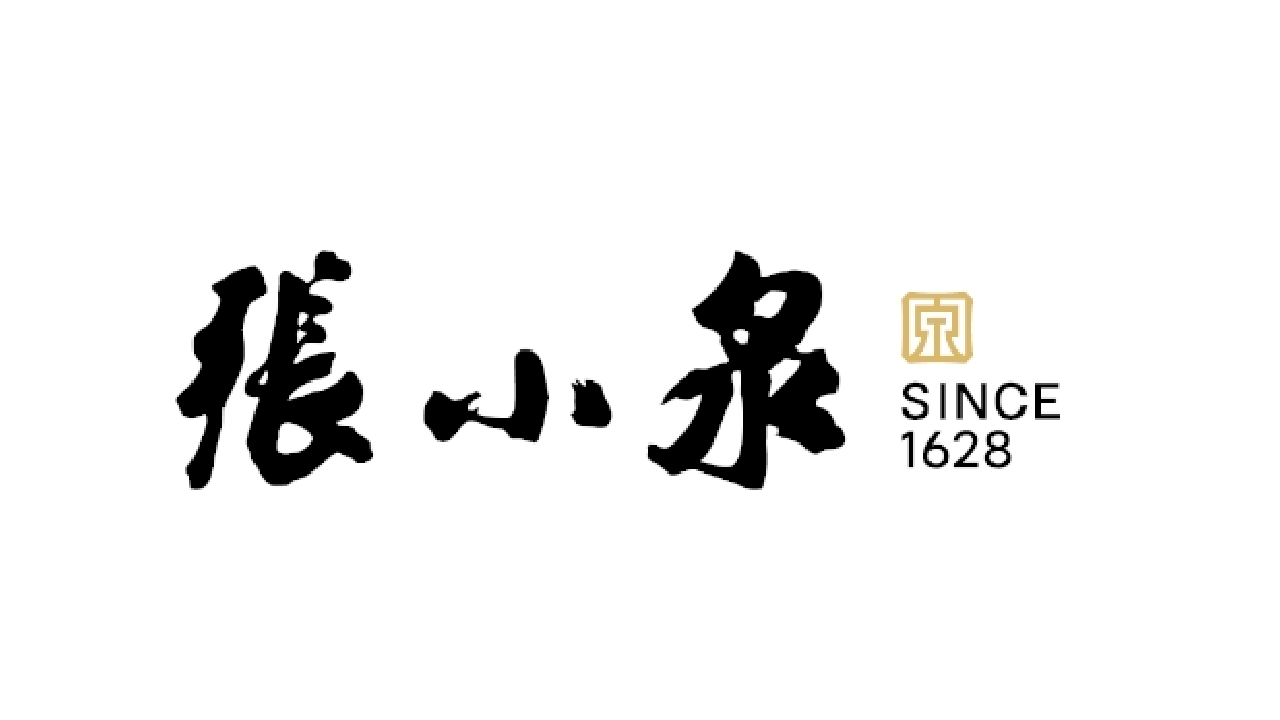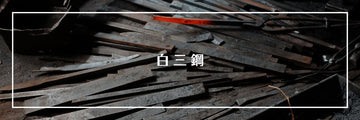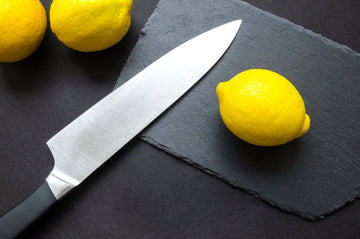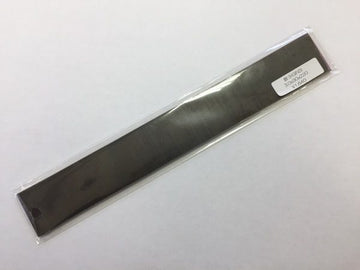In the world of Japanese kitchen knives, White Steel #3 (Shirogami 3) is like that reliable family sedan that's easy to drive and maintain, rather than a high-performance sports car that demands constant attention. Made by Hitachi Metals as part of their famous Shirogami series, this high-carbon steel has earned a reputation as the perfect introduction to traditional Japanese cutlery. With 0.80-0.90% carbon and minimal alloying elements, it prioritizes ease of sharpening and toughness over extreme edge retention, making it particularly appealing to those beginning their journey with Japanese knives.
What White Steel #3 is made of
The "White Steel #3" (Shirogami 3) name reveals its core philosophy - simplicity and purity:

- It contains 0.80-0.90% carbon, enough for excellent sharpness but less than other Shirogami grades for improved toughness
- It deliberately lacks chromium, meaning it isn't stainless but can achieve exceptional sharpness
- It contains only trace amounts of manganese and silicon to maintain steel purity
- The "white" designation comes from the clean, almost pure appearance of the steel when etched

This minimalist composition creates steel that responds extremely well to traditional Japanese forging and heat treatment techniques. Unlike modern stainless steels with complex alloy formulations, Shirogami 3 represents a traditional approach focused on achieving the best possible cutting-edge rather than convenience.
How White Steel #3 performs in the kitchen
Sharpness and edge retention
Where Shirogami 3 truly excels is in its ability to take an incredibly sharp edge. The simple carbon steel structure, unburdened by large carbide formations found in more complex steels, allows it to be honed to a razor-like edge that slices through ingredients with minimal resistance. It's like the difference between writing with a perfectly sharpened pencil versus a dull one - the cutting experience is noticeably smoother and more precise.

Edge retention is moderate - a Shirogami 3 knife maintains about 85% of its sharpness through processing 5 kg of vegetables, and professional chefs typically resharpen every 8-10 hours of use. While this doesn't match the longevity of more highly alloyed steels, what makes Shirogami 3 special is how easily it returns to peak sharpness. The steel responds beautifully to whetstones, allowing even those new to sharpening to achieve excellent results with minimal practice.
Reactivity and care requirements
The trade-off for Shirogami 3's performance is its reactivity. Without chromium, this steel will discolor, develop a patina, and potentially rust if not properly cared for. When exposed to acidic ingredients like onions or citrus, the steel reacts quickly, developing a bluish-gray patina that actually helps protect against further corrosion.

This reactivity means Shirogami 3 knives require immediate wiping after use, thorough drying, and occasional oiling to prevent rust. Many users find this maintenance becomes a satisfying ritual rather than a burden, creating a deeper connection with their tools. That said, this isn't the steel for those who want to toss their knife in a sink or dishwasher after cooking.
White Steel #3 Applications in kitchen knives
Traditional Japanese knife styles
Shirogami 3 finds its home in many traditional Japanese knife styles, particularly where ease of sharpening and a degree of toughness are valued:
-
Yanagiba: These long, thin slicing knives (240-300mm) for sashimi and sushi benefit from Shirogami 3's ability to take an extremely sharp edge for clean, precise cuts through delicate fish.

-
Deba: These heavier fish butchery knives (150-180mm) leverage Shirogami 3's toughness for tasks that involve occasional contact with small bones and cartilage.

-
Honyaki knives: The most traditional, prestigious Japanese knives made from a single piece of steel (rather than layered construction) often use Shirogami 3 for its excellent response to differential hardening, which creates beautiful temper lines (hamon).

Shirogami 3's lower carbon content compared to Shirogami 1 and 2 makes it less brittle, reducing the risk of chipping or cracking during the demanding honyaki forging process. This balance of performance and forgiveness makes it ideal for knives that will see daily use rather than occasional specialized tasks.
Modern applications
Beyond traditional shapes, Shirogami 3 works well in:
-
Petty/utility knives: Small (120-150mm) all-purpose knives that need to handle a variety of tasks while maintaining excellent sharpness.
-
Gyuto: Japanese-style chef's knives that perform a wide range of cutting tasks and benefit from Shirogami 3's balance of sharpness and toughness.

The steel has remained popular with both traditional Japanese blacksmiths and modern knife makers who appreciate its excellent forging characteristics and user-friendly performance.
Comparison with other kitchen knife steels
White Steel 3(Shirogami 3) vs. White Steel 2(Shirogami 2)
White Steel 2(Shirogami 2) contains more carbon (1.05-1.15% vs. 0.80-0.90%) than Shirogami 3, resulting in better potential edge retention but slightly less toughness. While both can achieve similar hardness (60-64 HRC), Shirogami 2 holds its edge about 15-20% longer in practical cutting tests. However, Shirogami 3 is less prone to chipping and slightly easier to sharpen, making it more forgiving for beginners. Price differences are minimal, with the choice primarily depending on whether you prioritize edge longevity or forgiveness.
White Steel 3(Shirogami 3) vs. White Steel 1(Shirogami 1)
White Steel 1(Shirogami 1), with the highest carbon content in the series (1.25-1.35%), offers superior edge retention but at the cost of increased brittleness and sharpening difficulty. It can achieve exceptional cutting performance in the hands of skilled users but demands more precise technique and careful use. Shirogami 3 provides a more balanced approach that accepts slightly reduced edge retention for significantly improved practicality in daily use.
White Steel 3(Shirogami 3) vs. Blue Steel 1 (Aogami 1)
Blue Steel 1 represents the premium tier of Hitachi's carbon steel line, containing higher carbon (1.25-1.35%) plus additions of tungsten, chromium, and molybdenum that are absent in White Steel #3. This creates a significant performance gap, with Blue Steel #1 offering substantially longer edge retention (up to 2-3 times) and superior wear resistance at extreme hardness (64-65 HRC). However, Blue Steel #1 is considerably more difficult to sharpen, less forgiving of improper technique, and typically costs 40-60% more. White Steel #3 remains the better choice for those developing their sharpening skills or who value frequent, easy resharpening over maximum edge longevity.
White Steel 3(Shirogami 3) vs. Blue Steel 2 (Aogami 2)
Blue Steel 2 contains slightly less carbon than Blue Steel #1 (1.0-1.2% vs. 1.25-1.35%) but more than White Steel #3, while still incorporating chromium, tungsten, and molybdenum absent in the White Steel series. It strikes an excellent balance between edge retention and practicality, holding an edge about 40-50% longer than White Steel #3 while remaining somewhat easier to sharpen than Blue Steel #1. Blue Steel #2 costs approximately 30-40% more than White Steel #3 and represents a popular "next step" for users who've mastered basic carbon steel care but want improved performance without the extreme specialization of Blue Steel #1.
White Steel 3(Shirogami 3) vs. Western stainless steels
Compared to common Western stainless steels like X50CrMoV15, Shirogami 3 offers superior potential sharpness and a more pleasurable sharpening experience but requires significantly more care to prevent corrosion. The Western steels prioritize convenience and low maintenance over ultimate performance, with stainless properties coming at the cost of somewhat limited sharpness potential. For those willing to embrace the care routine, Shirogami 3 delivers a noticeably superior cutting experience.
White Steel 3(Shirogami 3) vs. 10Cr15CoMoV
10Cr15CoMoV is a premium Chinese stainless steel, while White #3 is traditional Japanese carbon steel. 10Cr15CoMoV contains cobalt and more chromium (15%), providing excellent edge retention and stainless properties. White #3 offers superior potential sharpness but requires constant care to prevent rusting. 10Cr15CoMoV stays sharp longer with minimal maintenance, while White #3 delivers a more refined cutting experience for those willing to embrace regular maintenance.
White Steel 3(Shirogami 3) vs. 9Cr18MoV
9Cr18MoV is a high-chromium (18%) Chinese stainless steel, contrasting with non-stainless White #3. 9Cr18MoV provides excellent corrosion resistance and good edge retention, requiring minimal care. White #3 achieves a finer edge and more responsive cutting feel but demands immediate cleaning and oiling to prevent rust. 9Cr18MoV suits practical daily use in various environments, while White #3 appeals to traditionalists who prioritize ultimate cutting performance over convenience.
Taking care of Shirogami 3 knives
Basic maintenance
Caring for Shirogami 3 knives requires more attention than stainless steel but quickly becomes second nature:
- Wipe the blade clean immediately after each use, especially after cutting acidic foods
- Hand wash with mild soap, never soak or put in a dishwasher
- Dry thoroughly with a soft cloth immediately after washing
- Apply a thin coat of food-safe mineral oil or camellia oil weekly or before extended storage
- Store in a way that protects the edge - a wooden saya (sheath), knife block, or magnetic strip
Many chefs develop a rhythmic routine of wiping their knife between tasks, which becomes as natural as any other cooking technique. This care regimen is the trade-off for the exceptional performance Shirogami 3 provides.
Sharpening recommendations
Shirogami 3's excellent sharpening characteristics make it ideal for those learning to use water stones:
- Start with medium stones (1000-2000 grit) for edge setting and repair
- Finish with fine stones (3000-6000 grit) for refining and polishing
- The steel forms a burr quickly and clearly, making it easier to feel when you've established a proper edge
- A light strop on leather or newspaper can further refine the edge
Even those new to sharpening can achieve impressive results with Shirogami 3, making it an excellent teaching steel for developing this important skill.
Conclusion
White Steel #3 (Shirogami 3) represents a perfect balance of performance, accessibility, and tradition in Japanese kitchen knives. While it doesn't offer the extreme edge retention of more highly alloyed steels or the convenience of stainless materials, it provides an exceptional cutting experience with a level of sharpness that must be experienced to be fully appreciated.
For those willing to embrace the small additional care requirements, Shirogami 3 offers an ideal introduction to the world of carbon steel Japanese knives. Its forgiving nature during both use and sharpening makes it accessible to beginners, while its excellent performance satisfies even professional demands. The steel creates a connection between cook and tool that encourages mindfulness and appreciation for craftsmanship.
Like a well-made acoustic instrument that requires proper care but delivers unmatched tone, Shirogami 3 rewards those who choose it with a cutting experience that makes cooking more pleasurable and precise. For many chefs, both professional and home cooks, that daily joy is well worth the few extra moments of care.
I'll create 10 Q&A pairs about White Steel #3 (Shirogami #3) using your questions and adding three more:
FAQs
1. What is White #3 steel?
White #3 steel (Shirogami #3) is a high-carbon Japanese steel produced by Hitachi Metals containing 0.80-0.90% carbon with minimal alloying elements. It prioritizes ease of sharpening and toughness over extreme edge retention, making it an excellent entry point into traditional Japanese carbon steels for knife enthusiasts.
2. What is the difference between White steel #2 and #3?
White Steel #2 contains more carbon (1.05-1.15%) than White Steel #3 (0.80-0.90%), resulting in better edge retention but slightly less toughness. While both achieve similar hardness (60-64 HRC), White Steel #2 holds its edge about 15-20% longer. White Steel #3 is less prone to chipping and slightly easier to sharpen, making it more forgiving for beginners.
3. What is the difference between White #1 and White #3?
White Steel #1 contains significantly more carbon (1.25-1.35%) than White #3 (0.80-0.90%), delivering superior edge retention at the cost of increased brittleness and sharpening difficulty. White #1 represents the premium tier in the series for users who demand maximum cutting performance, while White #3 offers a more balanced approach between performance and practicality.
4. Is White steel better than Blue steel?
Neither is universally "better" - they offer different trade-offs. White steel provides superior potential sharpness and easier sharpening due to its purer composition. Blue steel (containing chromium, tungsten, and sometimes molybdenum) offers significantly better edge retention but is harder to sharpen. White steel is preferred for precision cutting and by those who enjoy frequent sharpening, while Blue steel suits those prioritizing longevity between sharpenings.
5. What is Japanese White steel?
Japanese White steel (Shirogami) is a high-carbon steel produced by Hitachi Metals known for its exceptional purity, containing minimal alloying elements besides carbon. This purity allows it to achieve razor-like sharpness and excellent responsiveness to traditional Japanese forging and heat treatment techniques. It comes in three grades (#1, #2, and #3) with varying carbon content, and is prized for its ability to take an extremely keen edge.
6. Is White #3 steel good?
Yes, White #3 steel is excellent for its intended purpose. It offers exceptional sharpness, good edge retention, and outstanding ease of sharpening. While it requires more maintenance than stainless steel due to its reactivity, many users find the superior cutting experience worth the additional care. It's particularly good for beginners to carbon steel Japanese knives due to its balance of performance and forgiveness.
7. How do you care for White #3 steel knives?
Care for White #3 steel involves: wiping the blade clean immediately after use (especially after acidic foods); hand washing with mild soap; thorough drying immediately after washing; applying food-safe mineral or camellia oil weekly or before extended storage; and storing properly to protect the edge. Never leave it wet, soak it, or put it in a dishwasher, as it will quickly rust without proper care.
8. How does White #3 steel compare to VG-10?
White #3 steel offers superior potential sharpness and a more pleasurable sharpening experience compared to Japanese stainless steels like VG-10, but requires significantly more care to prevent corrosion. VG-10 prioritizes balanced performance with convenience, containing chromium, cobalt, vanadium, and molybdenum to achieve good edge retention and corrosion resistance. White #3 delivers a noticeably superior cutting experience for those willing to embrace proper carbon steel care routines, while VG-10 offers excellent performance with much lower maintenance requirements.
9. What types of Japanese knives commonly use White #3 steel?
White #3 steel is commonly used in various traditional Japanese knife types, including Yanagiba (sashimi slicing knives), Deba (fish butchery knives), petty/utility knives, and Gyuto (chef's knives). It's particularly popular for Honyaki knives (traditional single-steel construction) due to its excellent response to differential hardening, which creates beautiful temper lines (hamon) and reduces cracking risks during the demanding forging process.
10. Is White #3 steel good for beginners to Japanese knives?
Yes, White #3 steel is one of the best entry points into Japanese carbon steel knives. Its easier sharpening characteristics make it forgiving for those developing their sharpening skills, while its toughness (compared to White #1 and #2) reduces the risk of chipping from improper technique. Though it requires more care than stainless steel, it provides an authentic Japanese knife experience with more forgiveness than higher-carbon alternatives, making it ideal for beginners committed to learning proper knife care.






